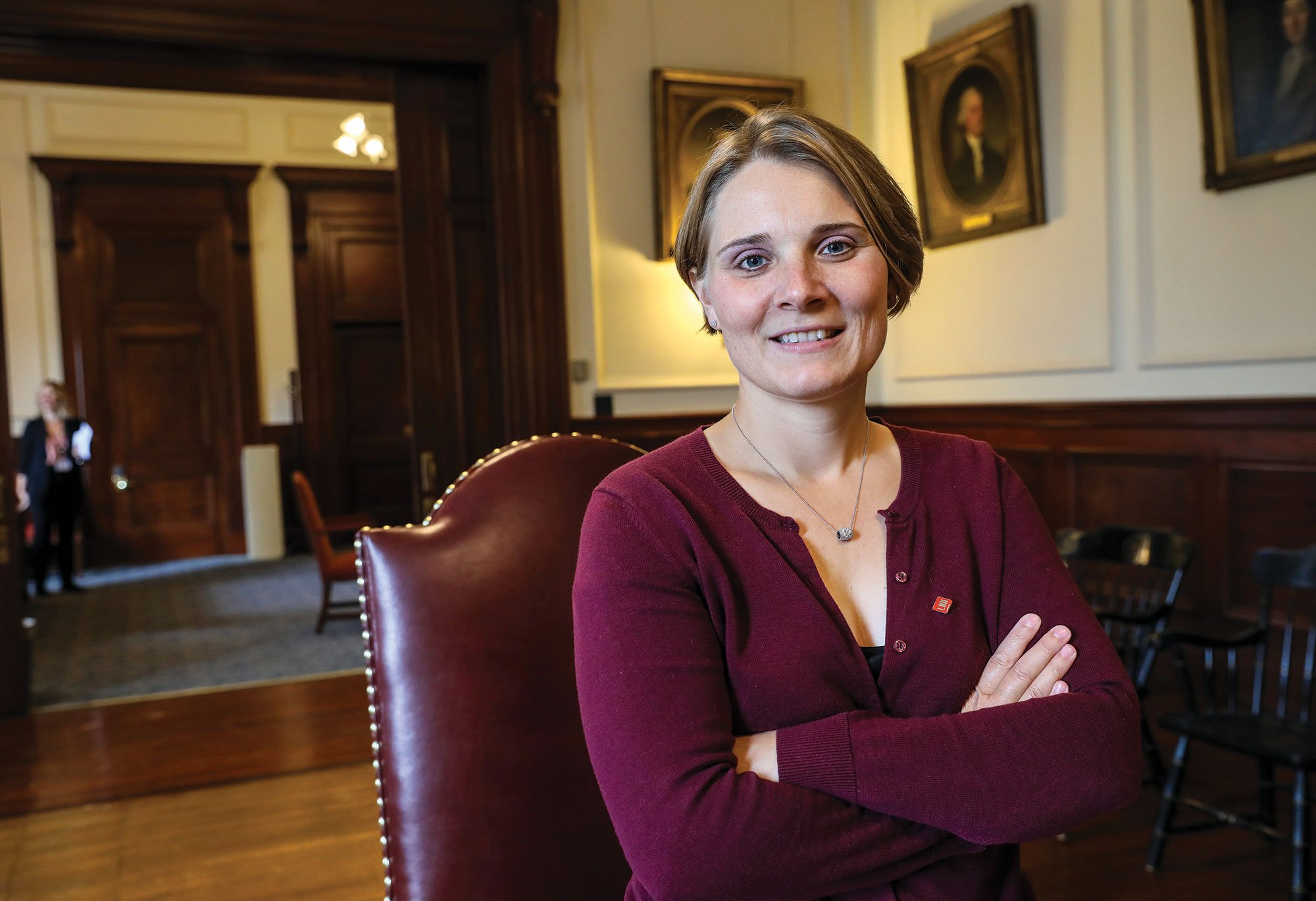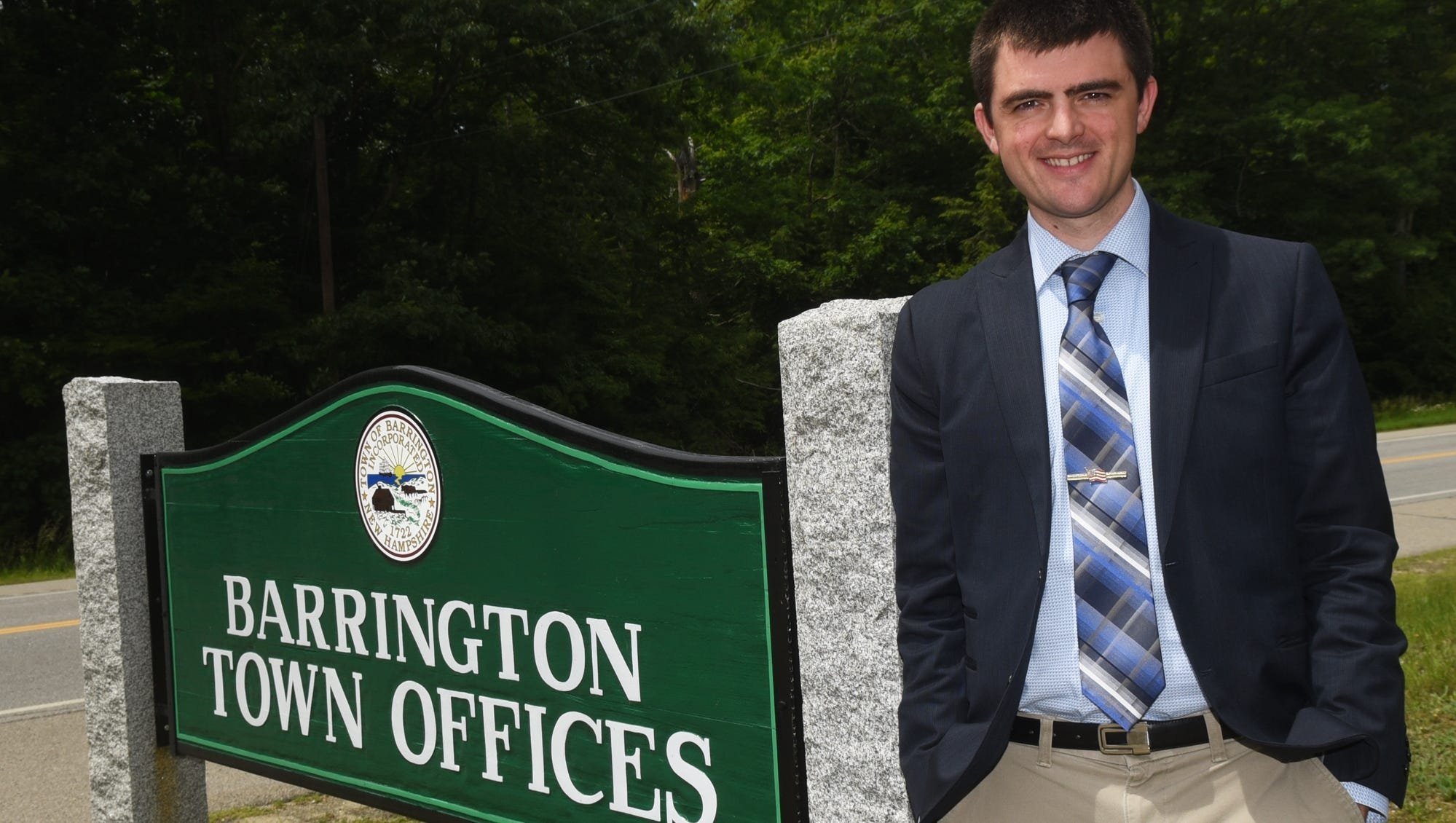By Susan Geier, Granite State News Collaborative
Editor’s Note: This article is part of an ongoing series taking a deeper look at the Civic Health Index and what it means for Granite Staters.
New Hampshire’s tradition of direct participation in government is a foundational part of its identity.
It turns out, however, that most of us don’t attend local meetings. In fact, just 12% of state residents attended a public meeting in the past year, down from 18% in 2019, according to the 2024 Civic Health Index released this month by the Carsey School of Public Policy at the University of New Hampshire.
Granite Staters, like people in the rest of the country, don’t attend public meetings or belong to clubs, groups and organizations like we did in past decades, according to researchers. Indicators of civic awareness and engagement reflect how people feel, learn, and take actions related to issues that affect their lives, according to the Civic Health Index findings.
“This decline allows you to question the fundamental good of those institutions,” said Robert Putnam, a New Hampshire resident and retired Harvard professor who’s been studying civic health and social connection for the past 50 years.
Declining involvement in community institutions, he says, has harmed our civic infrastructure because it affects our feelings of trust, mattering and belonging.
“What is more concerning in New Hampshire is that we are so reliant on people being civically engaged,” said Will Stewart, former director of Stay Work Play and now head of Leadership New Hampshire. “We rely on volunteers for select boards, school boards, zoning boards, civic clubs. Our reliance on volunteers has a disproportionate effect in New Hampshire versus the rest of the country.”
Overall, New Hampshire continues to rank higher than national averages in attending public meetings and contacting public officials.
Since the pandemic, public meeting attendance has dropped nationally but the drop in attendance was larger in New Hampshire than nationwide. Although many Granite Staters do attend public meetings, 88 percent of us did not attend public meetings at all.
When it comes to civic awareness and engagement, people who are older, have higher levels of education and higher incomes tend to be more civically aware and engaged, according to the findings.
Millennials, for example, were rated lower in giving, talking with friends and family about politics, doing favors for neighbors, paying attention to news, attending public meetings and participating in groups, according to the research.
“Young people are trying to build careers at the same time these costs are skyrocketing, while wages are not keeping pace,” Stewart said. “So this age group is likely working more just to pay bills so there is no time or energy to get involved. The focus is on career, bills and family.”
Researchers noted the drop in public meeting attendance may be due to health concerns related to COVID-19. It may be too early to know if other factors, such as dissatisfaction with politics or feelings of apathy, play a role in meeting attendance. The rise of online and hybrid public meetings may facilitate greater engagement over time, if those options are available.
Declining attendance
Tamworth Town Administrator Keats Myer said attendance at local meetings is a mixed bag. She noted 270 people (10 percent of voters) turned out at the last town meeting.
“It’s definitely come down over the years,” she said, but there still is a robust group of volunteers for town committees.
Like many communities, turnout is low for selectboard meetings, which are held at 6 p.m. on Thursdays. Myer knows people are often too busy to attend, but noted the meetings are available to watch online.
People don’t see themselves as part of a larger community or feel their voices matter, and when that happens it’s easy not to get involved, attend meetings or even vote, says Allyson Ruyder, director of the nonprofit NH Civics. (NH Charitable Foundation photo by Cheryl Senter)
Myer said there should be more focus on civic education so people understand what is at stake. Decisions, especially those made at the local level, have a direct impact on residents.
“Most don’t know how government works,” she said.
Allyson Ryder, executive director of NH Civics, a nonprofit focused on K-12 civics programming, policy research and advocacy, said a divestment in civics education over the past couple of decades has had a negative impact.
People don’t see themselves as part of a larger community or feel their voices matter, and when that happens it’s easy not to get involved, attend meetings or even vote, she said.
The good news is more attention is being paid to civics education.
Last year in the N.H. Legislature, a law was passed to require civics education in elementary, middle and high school. This bill also defines civics education and establishes the N.H. Civics Education Commission to oversee and assist civics education in New Hampshire.
And another law was passed this year requiring school districts and private high schools to develop programs to inform high school students about registering to vote.
Still, Ryder said, while schools play a critical role, we need to view civics as more than learning about government, but how we all can work together to address issues in our community.
“This is where community can come into play — to help people understand that all of their energy and participation helps all of us to be successful,” she said, noting she was on her local school board and saw the low turnout, even though getting involved is simple.
Empowering residents
As part of its research, the Civic Health Index authors suggest municipalities work to find strategies to build trust, including helping residents learn how governmental systems work and providing increased transparency into the process.
That’s something the town of Barrington has taken to heart.
‘It is our job to empower residents to get involved with the civic process,’ said Town Administrator of Barrington, which earlier this year saw attendance at town meeting. (Foster’s Daily Democrat photo by Deb Cram)
The town had a low turnout for public meetings and voting. But thanks to some innovative civic engagement initiatives, there was a record 41% voter turnout for town meeting earlier this year.
“That is the highest the town has ever had,” said Town Administrator Connor MacIver. “And there were 40 warrant articles on the ballot.”
Low attendance at public meetings is an ongoing, complex issue that isn’t easily addressed, so MacIver and other officials decided to put their focus on getting higher turnout for town meeting.
“That is our bread and butter,” he said. “We are lucky in New Hampshire that the government is close to the people. So, it is our job to empower residents to get involved with the civic process.”
Barrington Kids Ballot (courtesy Barrington website)
That’s where Barrington Kids Vote comes in. It’s a voting experience for kids held at the annual town and school election in March. Beginning last year, the town put fun and civic-oriented issues on a special kid ballot. Kids then go with their parents to the polls to cast their own votes.
This past March, 424 kids voted on the color of the town dog tag (purple won), the name of the forestry truck (Smokey Bearington was the top vote-getter), and when to hold trick-or-treat (Oct. 31).
“It’s an opportunity for kids to talk to their parents about voting,” he said.
In addition to Barrington Kids Vote, the town puts together a comprehensive, easy-to-read voter guide and distributes it in print, online and via social media.
“We needed to package it in a way that makes it easy to digest,” MacIver said. “Folks lead busy lives, and it’s hard to stay involved, but local government relies on them. That is why voter education is so important.”
These articles are being shared by partners in the Granite State News Collaborative. For more information, visitcollaborativenh.org.



